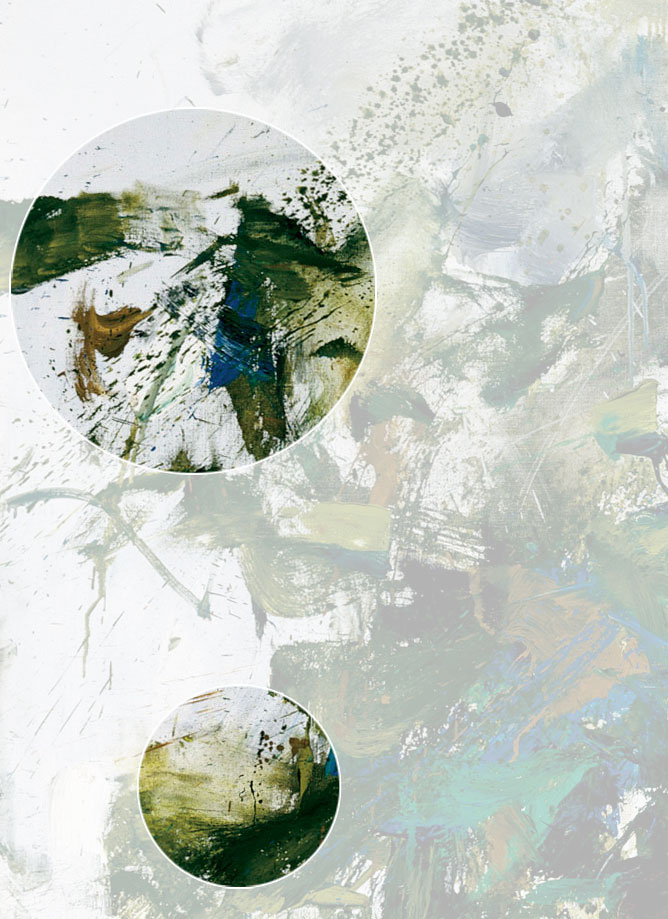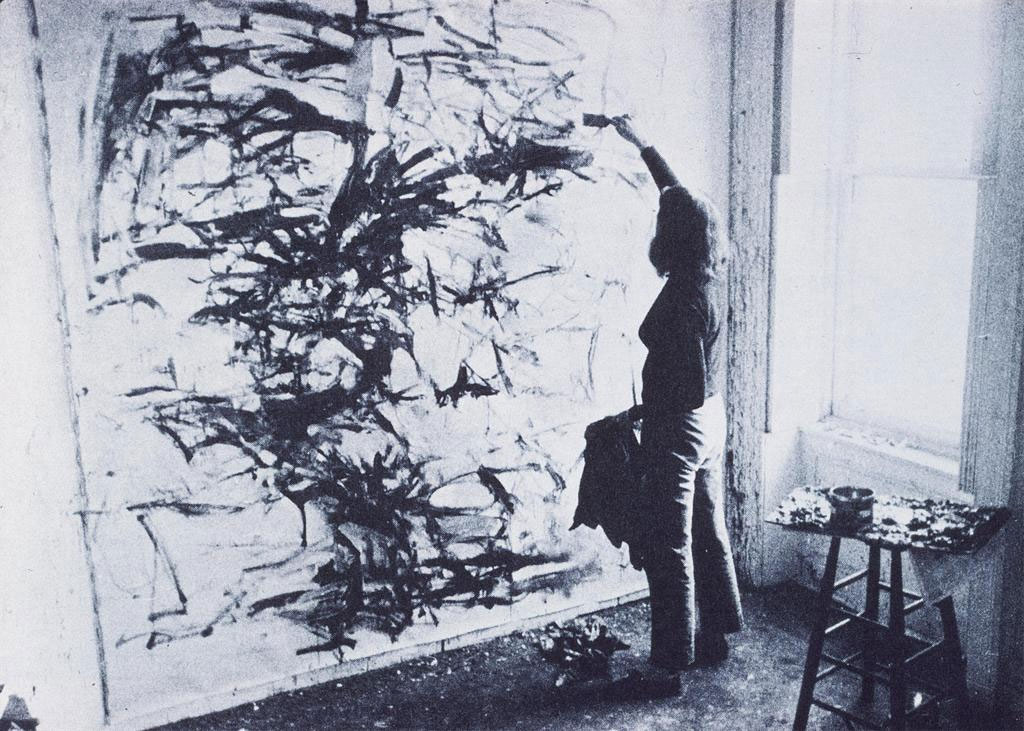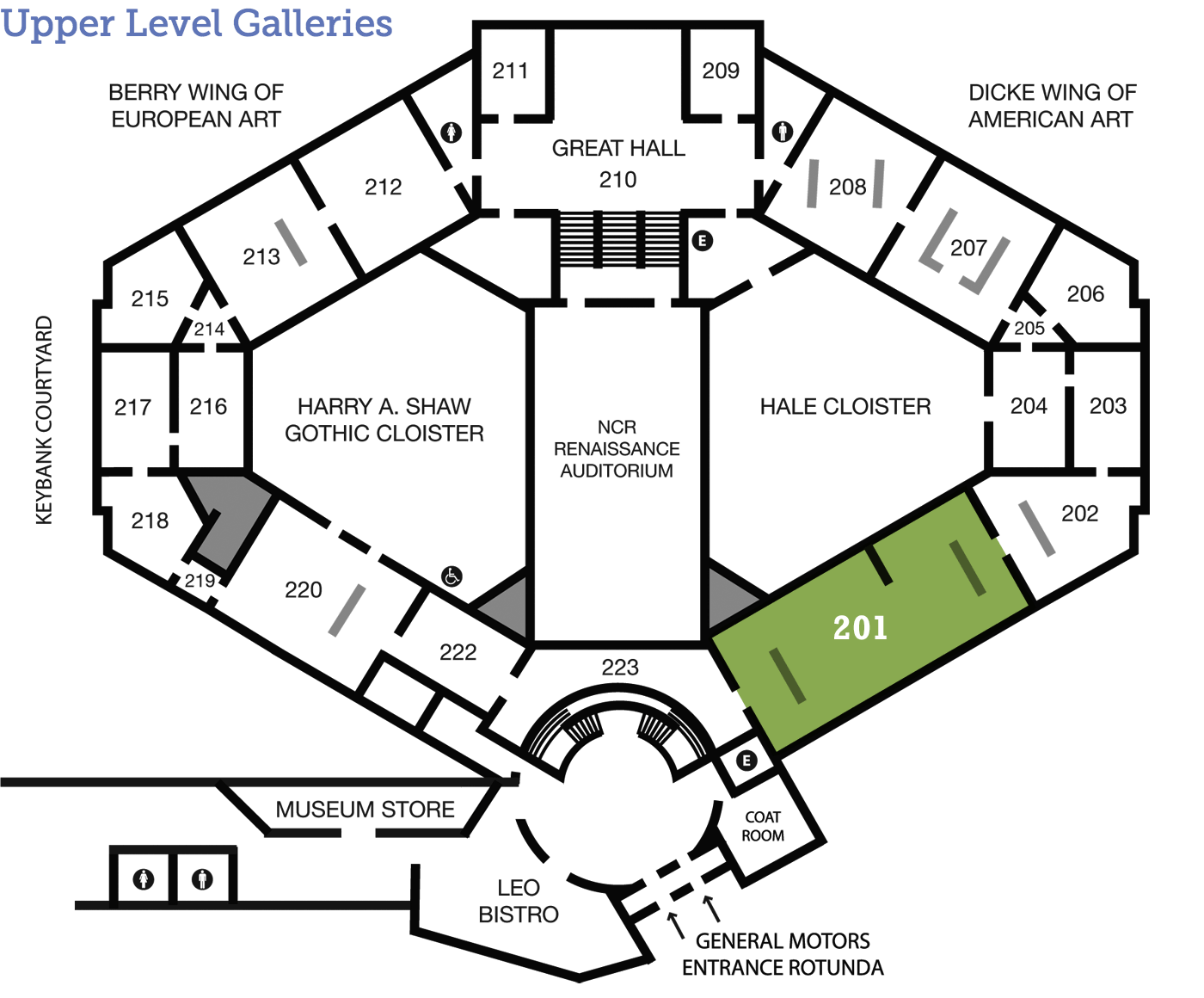
Joan Mitchell
Untitled
(1925-1992)
American c. 1961 Oil on canvas Gift of Mr. Max Pincus in honor of Mr. and Mrs. Elton F. MacDonald 1964.25 Gallery 201
Something Different
Drips, globs, swizzles, and splashes. What senses do these ignite—what do you see, hear, or even smell? Do the abstract patterns become familiar shapes or remind you of experiences? Step out of yourself for a moment and see where Joan Mitchell’s painting will take you.
A Day in the Life
Tools and Techniques
Unconventional?
Joan Mitchell used a variety of tools and techniques when applying paint to the canvas. These included rags, house paint brushes, and even her own fingers. Look closer at the upper-left corner of this painting and notice the brown mark, which may be an example of painting with her fingers.
See how many other textures you can find and consider what tools or techniques might have been used to make them. Also, notice how these textures play off each other and create a sense of movement and depth in the painting.


Images courtesy of the ARTstor collection
Behind the Scenes
Look Closer
Just for Kids
Look!
Joan Mitchell was a painter, but she did not always use a paint brush. Look at her painting. What kinds of tools do you think she painted with? Why? What kinds of textures did she create even without using a paint brush?
The next time you are painting put down the paintbrush. Think about Joan Mitchell. Find tools that you can use to complete your painting. It could be an old toothbrush, spoons and forks, fabric, a spray bottle, or even your fingers! What kind of textures will you create?
Signs & Symbols
Dig Deeper
Natural Inclination
Looking at this painting, would you be surprised to know that nature is an important subject for Joan Mitchell? Talking about the impact of nature on her work, Mitchell said:
However, unlike many of the other painters in this group, Mitchell was very interested in nature. She would continue to explore the dialogue between abstract painting and her experience of nature until her death in 1992, even as trends in the art world shifted to Pop Art, such as the work of Andy Warhol, and other more conceptual kinds of art. Moving to France in 1959, where she lived the rest of her life, helped give Mitchell the space to pursue her singular vision.
I would rather leave Nature to itself. It is quite beautiful enough as it is. I do not want to improve it…I could certainly never mirror it. I would like more to paint what it leaves me with.
Quoted in Marcia Tucker, Joan Mitchell (New York: Whitney Museum of American Art, 1974), 8.
Many of Mitchell’s paintings evoke a certain feeling that comes from the experience of nature. This is not done by painting outdoors, but by drawing on memory; Mitchell almost always worked in a studio. This contrasts with an Impressionist painter like Claude Monet, who painted outdoors and wanted to record nature as he saw it in a transitional moment of time.
Arts Intersected
The Sculpture Speaks
Did You Know?
Expert Opinion
Look Around
About the Artist
Finding Her Own Voice
Early in her career, Mitchell was associated with a group of New York painters who are often referred to as “Abstract Expressionists.” These painters explored the expressive qualities of paint in largely abstract images made with gestural brushstrokes or broad fields of color. For example, compare the brushstrokes in Mitchell’s painting with those in Hans Hofmann's Enchanted Fire No.2 in Gallery 202.
However, unlike many of the other painters in this group, Mitchell was very interested in nature (see “Dig Deeper”). She would continue to explore the dialogue between abstract painting and her experience of nature until her death in 1992, even as trends in the art world shifted to Pop Art, such as the work of Andy Warhol, and other more conceptual kinds of art. Moving to France in 1959, where she lived the rest of her life, helped give Mitchell the space to pursue her singular vision.
Talk Back
For Love or Feeling
Talking about what motivates her painting, Joan Mitchell said, “I paint out of love. Love or feeling is getting out of yourself and focusing instead on someone or something else.” How does this fit with your conception of paintings? Could the experience of looking at a painting also be an expression of love? Does that change the way you look at this painting?
Quoted in Judith E. Bernstock, Joan Mitchell (New York: Hudson Hills Press, 1988), p. 43.

